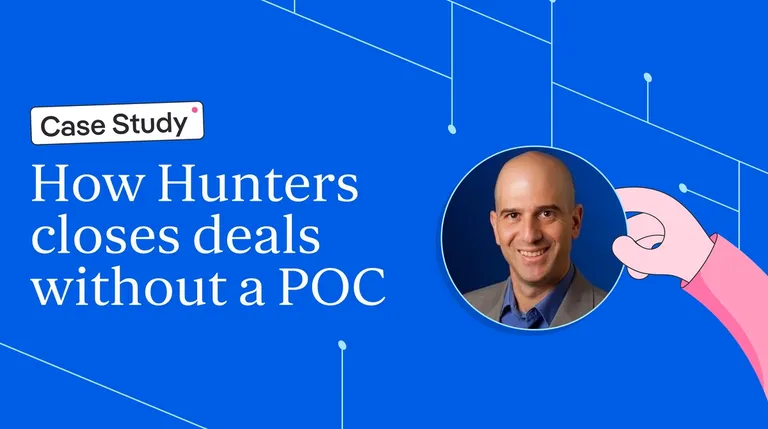Selling cybersecurity software comes with unique challenges. It isn’t like selling ERP or project management software. Your buyers are highly technical, deeply skeptical, and demand proof that your product actually works. But giving them that proof? That’s where things get complicated.
Live demos in cyber require secure, stable environments—ones that won’t expose sensitive data or break due to backend dependencies. Maintaining multiple demo environments across different operating systems, integrations, and policy configurations is a logistical, time-consuming nightmare. And giving prospects hands-on experience? Most cybersecurity products simply can’t support that, leading to drawn-out PoCs that slow deal velocity.
So how do you show your product’s value without putting your data at risk or burning out your SEs? In this article, we’ll break down the biggest demo challenges in cybersecurity sales and how to overcome them.
The Importance of the Demo in Cybersecurity Sales
Cybersecurity is one of the most competitive software markets, where buyers are highly skeptical and often evaluate multiple vendors at once. They want to see the product, not just get a pitch. Standing out isn’t just about having the best product—it’s about how well you communicate its value.
A compelling demo isn’t just a walkthrough of your UI; it’s your best opportunity to show how your solution stops threats,gives visibility, or strengthens security postures, all while integrating into their prospect’s existing stack. When it comes to cyber demos, effective storytelling is just as important as technical validation. A well-executed demo shows prospects that you’ve actually listened to what the buyer is telling you during discovery, understand their challenges, and can solve them better than anyone else. Buyers want to see how your product addresses their pain points, fits into their environment, and gives them the best view of potential threats. A generic, one-size-fits-all demo won’t cut it.
Delivering that kind of demo—one that’s personalized, technically sound, and secure—is where many cyber companies struggle. Let’s break down the key challenges and how to solve them.

The Challenges:
Keeping your demo process efficient and effective isn’t easy. Here are the most common challenges cybersecurity sales teams face:
- Complex Configurations & Integrations: Cybersecurity tools don’t work in isolation. They integrate with identity providers, SIEMs, cloud platforms, and existing security stacks. Demonstrating full functionality means juggling multiple configurations, OS compatibility, and policy settings—leading to high demo maintenance and frequent technical roadblocks.
- Security Risks & Compliance Concerns: Using production environments for demos can inadvertently expose sensitive data or configurations. Even dedicated demo or staging environments can be risky if they contain sensitive data, live customer information, or outdated security policies that shouldn’t be exposed.
- Reliance on SEs for Every Demo: In cyber, Account Executives may be able to demo, but without guardrails, SEs often don’t trust they’ll get it right—keeping SEs involved in nearly every sales conversation. This creates bottlenecks, slows down sales cycles, and limits the number of deals teams can effectively work.
- No Secure, Interactive Leave-Behinds: Sending prospects a way to interact with your product after the demo is nearly impossible without exposing sensitive data, leading to long and resource-heavy PoCs.
Traditional Cybersecurity Demos
Scalable Demo Environments
Live demo environments are fragile
Backend dependencies, integrations, and policy configurations create instability and require constant maintenance.Cloned demo environments ensure stability
Independent replicas eliminate backend dependencies, ensuring a controlled, reliable demo experience.Security risks limit what can be shown
Running live demos risks exposing sensitive data or configurations.Fully secure and isolated environments
Protects sensitive data while providing a full-fidelity product experience.Sales teams rely heavily on SEs
AEs often lack the technical expertise or trust to confidently demo complex productsEnable AEs to demo independently
Structured environments with guardrails in place, allow AEs (or even partners) to showcase product value without technical risk.No hands-on buyer experience
Most cybersecurity products lack interactive leave-behinds, requiring prospects to wait for PoCs.Guided sandbox environments accelerate decisions
Prospects can explore safely after a demo, reinforcing key capabilities.PoCs are long and resource-intensive
SEs spend excessive time maintaining and managing PoC environments.Shorter, structured PoCs
Pre-built environments reduce setup time, keeping deal momentum high.
How Demostack Can Help You Remove Demo Roadblocks
Demostack eliminates these roadblocks by providing secure, flexible, and scalable demo solutions—ensuring every demo tells the right story while protecting sensitive data.
1. No More Broken Demo Environments:
Cloned demo environments replicate your product’s exact look and feel—without backend dependencies, security risks, or maintenance headaches. Every demo is stable, secure, and always up to date.
2. AEs Can Demo with Confidence: Equip AEs with customizable demo templates that highlight key integrations and use cases, allowing them to tell a compelling product story—without needing deep technical knowledge or SE support.
3. Faster PoCs with Guided Sandboxes: Give prospects a hands-on, trial-like sandbox experience with built-in guidance to showcase key features. Instead of long, drawn-out PoCs, prospects get immediate value—speeding up the sales cycle.
4. Secure, Controlled Demo Experiences: Protect sensitive configurations with controlled, non-editable demo environments. Show prospects the right product story—without exposing critical security policies or risking competitive intelligence leaks.

How Hunters Transformed Demo Operations with Demostack
Hunters, a leader in SOC cybersecurity, struggled with an unpredictable demo environment that was difficult to maintain. Frequent updates, backend dependencies, and integration complexities made it nearly impossible to deliver a consistent, high-quality demo. The team’s homegrown demo setup required constant maintenance, causing delays and making their product story appear outdated—especially during high-stakes moments like trade shows.
With Demostack, Hunters gained a secure, easy-to-maintain demo environment that eliminated backend dependencies and ensured a flawless demo every time. As Hunters' VP of Sales Engineering, Chris Buchanan, put it, “I was sold on Demostack within the first 20 minutes.” This shift allowed Hunters to deliver compelling demos consistently, a crucial factor in shortening their sales cycle.
With a reliable demo foundation and sandbox environments for post-demo exploration, Hunters could engage buyers more effectively and move deals forward faster. By eliminating demo and PoC roadblocks, Hunters reduced many sales cycles by 50%, freeing up pre-sales resources and reinforcing their reputation for innovation and reliability in the SOC space.
The Future of Cybersecurity Sales Demos
Cybersecurity sales require demos that are stable, secure, and effective. Without the right solution, teams struggle to maintain environments, overburden SEs, and rely on lengthy PoCs to prove product value.
Demostack helps cybersecurity companies demo with confidence - reducing risk, increasing speed, and improving conversion rates. Ready to see it in action? Talk to us, we are here to help!



